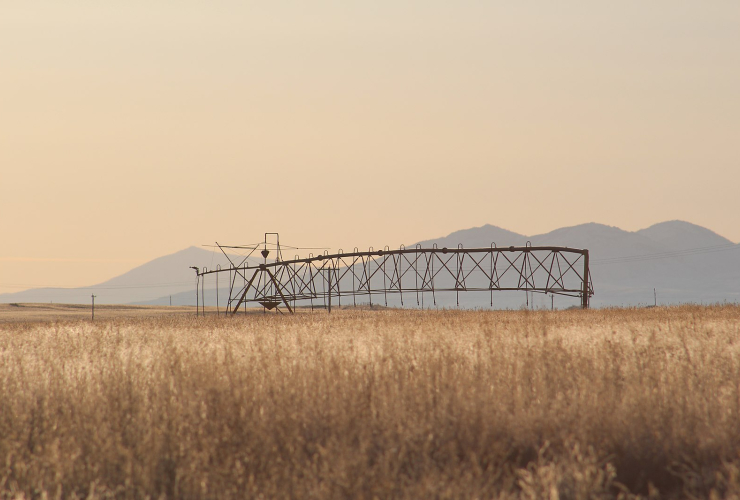Every autumn, B.C.'s Cortes Island rolls out a critical road safety campaign to protect some of the smallest and most vulnerable members of the community — rough-skinned newts.
Friends of Cortes Island (FOCI), a local conservation group, established the Newt X-ing Action Project to protect the little creatures, which face hazardous trips across roadways when they leave their wetland habitats and head into nearby forests to hibernate at the start of the rainy season.
As part of the campaign, FOCI reminds drivers and cyclists to keep their eyes open for the small critters.
It also posts striking yellow-and-black newt crossing signs at hot spots where the salamanders are most likely to be using the island’s roads, said Max Thaysen, FOCI board president.

“I think it’s a heartwarming project. And they’re really cute,” said Thaysen. “People like to see the signs, and lots of people care about the newts and try to avoid running them over.”
The chubby salamanders can reach a maximum length of 22 centimetres tip to tail but are hard to spot on the roads and can be mistaken for leaves, said Thaysen.
That is, unless they are agitated, at which point, rough-skinned newts will curl back their heads to reveal their bright yellow or orange underbellies as a warning to predators.
The newts are the most poisonous amphibians in the Pacific Northwest and can contain enough poison to kill 25,000 mice.
The toxin secreted through their skin, to deter other animals from eating them, is similar to that used by deadly pufferfish. One of the few predators able to stomach the newts is garter snakes.

But the salamanders pose little threat to humans unless they are foolish enough to ingest them; one man died after doing just that, Thaysen said.
Like most amphibians, the newts play an important role in wetlands, he said.
“People like seeing them because they can be an indicator of healthy aquatic ecosystems,” Thaysen said. “They’re especially sensitive to pollution or toxins in our waterways.”
Road mortality is a significant threat to amphibians and reptiles, both of which are considered the species most at risk in B.C., with more than 50 per cent of the species in each group listed as conservation concerns federally and/or provincially.
In March, B.C.’s Ministry of Environment and Climate Change Strategy released guidelines to help assess, avoid and minimize road impacts on amphibians and reptiles in the province.
A number of communities across B.C. have also established projects to try to protect at-risk species and curb the roadway carnage.
The Fraser Valley Conservancy (FVC) group established a tunnel and detours along Chilliwack roadways that bisect wetlands in the Ryder Lake area. The measures are in place to preserve migrating baby western toads — the size of a dime and dubbed toadlets — as well as other amphibians, such as northern red-legged frogs.
On Vancouver Island, SPLAT — Some Poor Little Amphibians Trampled Project — has also installed tunnels and other mitigation measures along Highway 4 towards Ucluelet to reduce the road death threat for a number of frogs and salamanders, including the rough-skinned newt.
Thaysen said the Newt X-ing Action Project also does work in the spring when the island’s salamanders make a return trip to the wetlands to breed.
While drivers should slow down and be cautious, well-meaning people shouldn’t try to pick up the newts in an effort to assist them, he said.
“It’s hard to tell which direction they're headed. So, helping them cross the road might not be all that helpful,” Thaysen said.
“Plus, the oils on our hands can be harmful to amphibians of all sorts,” he said, adding that if people must pick them up they should coat their hands in dirt or mud.
Though protected under B.C.’s Wildlife Act, rough-skinned newts are quite common, Thaysen said.
But they merit protection so they stay abundant, he added.
“They’re active users of our roadways and are more vulnerable to being killed in that particular way,” Thaysen said.
“I suppose if there were any other creatures that were quite as likely to get run over, we would probably put up signs for them, too.”

Rochelle Baker / Local Journalism Initiative / Canada's National Observer
The toxicity of these newts
The toxicity of these newts varies geographically. Those in Oregon and some other areas of the US Pacific NW are the most toxic--the human death mentioned in the article occurred in Oregon when a young man ate one on a dare. The newts on Vancouver Island and adjacent islands like Cortes and Denman, where I live, carry little or no toxin and are not a threat to humans or their natural predators.
(Brodie et al, 2002) https://onlinelibrary.wiley.com/.../j.0014-3820.2002...






Comments